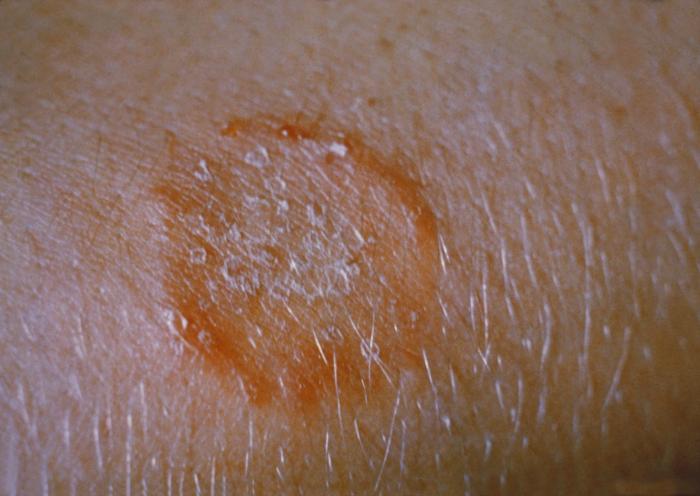5 Facts About Ringworm (Dermatophytosis)

Ringworm, otherwise known as Dermatophytosis or Tinea, is a type of contagious skin infection that can grow on people and other animals.
Are you familiar with “athlete’s foot” or “jock itch”? These are types of ringworm infections!
Today we will be featuring the causes for ringworm and provide pointers on how to prevent and treat it. Here are 5 facts you should know:
Image Source: Centers for Disease Control and Prevention (cdc.gov)
1. Ringworm is caused by a fungal infection, not a worm.
Despite its name, there are no actual worms involved. Ringworm is a fungal skin infection that shows up as a circular, red patch of rash that can be bumpy, scaly as well as itchy.
There are different types of ringworm infections, as there are approximately 40 different species of fungi that are responsible for ringworm. They are belong in the genuses Trichophyton, Microsporum, and Epidermophyton and are dermatophytes (“skin-eaters”) and rely on the top layer of your skin for sustenance. Ringworm-causing fungi generally enjoy and thrive in moist areas.
A ringworm infection can be confirmed by a doctor or veterinarian; one method by taking a small sample of skin from the infected area and looking at it under the microscope to see whether a ringworm-causing fungus is present.
2. It is capable of growing on different parts of your body (skin, hair, nails).
Your body normally has a lot of bacteria and fungi living on your skin. Most of them are good for you, but some aren’t.
Ringworm can be found growing on different parts of your body and you might recognize some of these conditions by name:
- Feet (tinea pedis, commonly called “athlete’s foot”)
- Groin, inner thighs, or buttocks (tinea cruris, commonly called “jock itch”)
- Scalp (tinea capitis)
- Beard (tinea barbae)
- Hands (tinea manuum)
- Toenails or fingernails (tinea unguium, also called “onychomycosis”)
- Other parts of the body such as arms or legs (tinea corporis)
Source: About Ringworm (cdc.gov)
3. Ringworm can spread and is very contagious.
You can catch ringworm from other people, animals, touching objects or walking on ground that is contaminated with the fungus. Skin-to-skin contact, swimming pools, locker rooms, touching and sharing personal items such as clothes, shoes, towels, and combs are all common ways that people end up with ringworm.
This is why it’s important to keep your hands and feet clean, and practice good hygiene in general – you would be reducing your likelihood of catching ringworm, and you would also be protecting others by reducing your likelihood of spreading ringworm.
An already existing ringworm infection can spread to other parts of the body, therefore it should be treated and cured to prevent it from getting worse. You should consult a doctor if you suspect that you have ringworm.
4. Anyone can catch ringworm.
Although children are more likely to be affected by ringworm, people of all ages can catch it. Individuals who have a weakened immune system are more susceptible.
And as mentioned earlier, cats, dogs, cows, and many other animals can also be infected with ringworm by coming into contact with something or someone who is contaminated. The interesting thing about ringworm in other animals is that sometimes it is asymptomatic (no visible rash) and the animal may be a carrier without you realizing it.
5. It can be treated.
Fortunately, ringworm is usually treatable within 2-4 weeks by using antifungal creams, lotions, or powders regularly applied to the affected area of skin.
Most infections can be treated by non-prescription (“over-the-counter”) medication, but scalp ringworm is a special case and requires prescription medication to properly treat.




